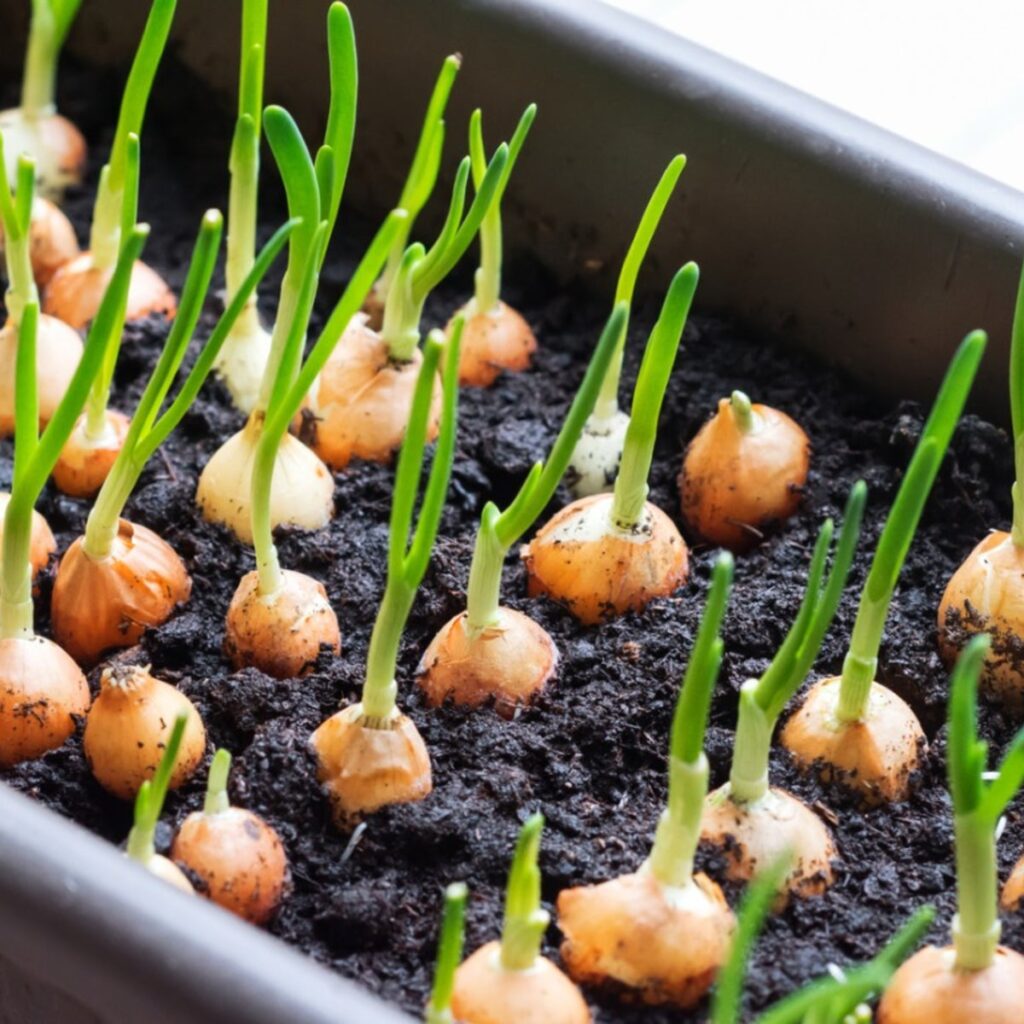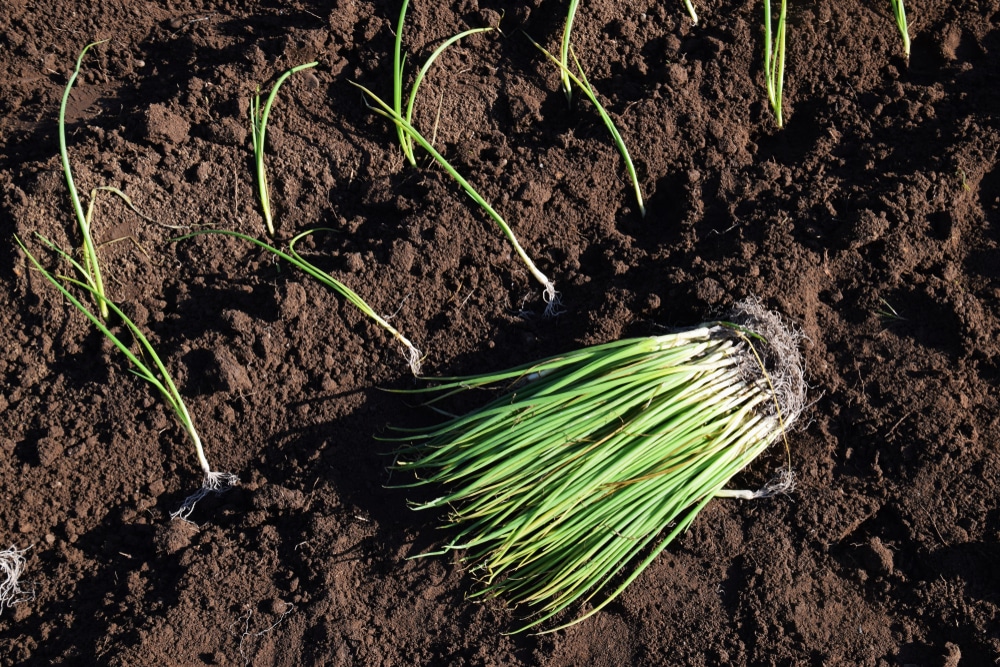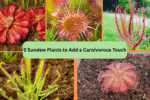Onions are one of the most rewarding and versatile vegetables to grow in a home garden. They’re essential in countless recipes, store well for months, and are surprisingly easy to grow — especially when you start with onion sets. If you’ve ever struggled with growing onions from seed, switching to onion sets is a simple, reliable way to ensure a successful harvest.
In this comprehensive guide, we’ll walk you through everything you need to know about planting onion sets, from choosing the right varieties to preparing the soil, planting, caring for your crop, and finally harvesting plump, flavorful onions you’ll be proud to grow.

What Are Onion Sets?
Onion sets are small, immature onion bulbs grown from seed the previous year and then harvested while still tiny. These mini bulbs are stored over the winter and replanted in the spring to produce full-sized onions. They’re an excellent choice for beginner and seasoned gardeners alike because:
- They’re easy to handle.
- They establish quickly in the soil.
- They’re less susceptible to diseases than seeds.
- They often produce a harvest in a shorter time.
Why Choose Onion Sets Over Seeds or Transplants?
While onions can be grown from seeds, transplants, or sets, here’s why sets are often the gardener’s favorite:
- Faster growth: Sets mature faster than seeds.
- Cold-hardy: They tolerate cool soil and weather better.
- Simpler to plant: No need to fuss over tiny seeds.
- Reliable yield: Lower risk of poor germination or seedling failure.
Note: Onions grown from sets are sometimes prone to bolting (sending up a flower stalk) if stressed, but proper care can minimize this issue.
Choosing the Right Onion Variety
Onions come in various types, each suited to different climates and uses. When selecting sets, consider your region’s daylight hours:
- Short-day onions: Best for southern regions with mild winters.
- Begin forming bulbs when daylight reaches 10-12 hours.
- Examples: Texas Early Grano, Red Creole.
- Long-day onions: Ideal for northern areas.
- Start forming bulbs when daylight reaches 14-16 hours.
- Examples: Walla Walla, Yellow Sweet Spanish.
- Intermediate-day onions: Suited for areas in between.
- Form bulbs when daylight reaches 12-14 hours.
- Examples: Candy, Red Torpedo.
Ask your local nursery or extension office for recommendations suited to your region.

When to Plant Onion Sets
Timing is key when planting onion sets:
- In mild winter regions: Plant in late fall for a spring harvest.
- In cold climates: Plant in early spring as soon as the soil can be worked, typically 4-6 weeks before the last expected frost.
Soil temperature should be at least 40°F (4°C) for successful planting.
Where to Plant Onion Sets
Onions prefer full sun and well-drained, fertile soil. Choose a spot that receives 6-8 hours of direct sunlight daily.
Good companions for onions: Carrots, beets, lettuce, and tomatoes.
Avoid planting near: Peas and beans, as onions can stunt their growth.
Preparing the Soil
Onions thrive in loose, well-drained soil rich in organic matter. Here’s how to prep it:
- Loosen soil to a depth of 8-12 inches.
- Remove stones and debris.
- Work in 2-3 inches of compost or aged manure.
- Ensure a soil pH between 6.0-7.0 for optimal growth.
- Add a balanced fertilizer (10-10-10) before planting, following package instructions.
Pro Tip: Avoid fresh manure, which can cause soft, poorly storing bulbs.

How to Plant Onion Sets
Spacing and Depth
- Plant sets 1–2 inches deep with the pointy end up.
- Space sets 4 inches apart for full-sized bulbs.
- Leave 12-18 inches between rows for good air circulation.
Note: Closer spacing (2 inches apart) can be used for growing green onions (scallions), which are harvested early.
Caring for Onion Sets
Onions are relatively low-maintenance, but a few simple practices will help you achieve a thriving crop:
Watering
- Onions need consistent moisture, especially during bulb formation.
- Water about 1 inch per week, either from rain or irrigation.
- Avoid overwatering, as soggy soil encourages rot.
Mulching
- Apply a light mulch of straw, shredded leaves, or grass clippings.
- Helps retain moisture, suppress weeds, and regulate soil temperature.
Fertilizing
- Feed with a nitrogen-rich fertilizer every 2-3 weeks during the early growing season.
- Once bulbs start forming (when the stem thickens at the base), switch to a fertilizer with less nitrogen and more phosphorus and potassium.
Managing Weeds and Pests
Weeding
- Keep the onion bed weed-free to reduce competition.
- Weed gently to avoid damaging the shallow onion roots.
Common Pests
- Onion maggots: Lay eggs at the base of plants. Use floating row covers and practice crop rotation.
- Thrips: Tiny insects causing silver streaks on leaves. Spray with insecticidal soap or neem oil.

When and How to Harvest Onions
Time to Harvest:
- Green onions: Harvest tops when they’re 6-8 inches tall.
- Bulb onions: Harvest when the tops turn yellow and fall over, usually 100-120 days after planting.
Harvesting Process:
- Loosen soil around the bulbs with a garden fork.
- Gently pull onions from the ground.
- Leave them to dry (cure) in a warm, dry, shaded place with good airflow for 7-14 days.
- Once the outer skins are papery, trim roots and tops.
- Store in a cool, dry, well-ventilated area.
Storage tip: Mesh bags, baskets, or braiding and hanging are excellent storage options.
Common Problems and How to Solve Them
| Problem | Cause | Solution |
|---|---|---|
| Bolting (flowering) | Temperature fluctuations | Use appropriate varieties, plant at the right time |
| Yellowing leaves | Overwatering, poor soil nutrients | Improve drainage, apply balanced fertilizer |
| Rotting bulbs | Excess moisture | Ensure good soil drainage and avoid overwatering |
Final Thoughts
Planting onion sets is one of the easiest and most rewarding ways to grow onions. They’re hardy, quick to establish, and require less fuss than seeds. With proper soil preparation, timely planting, and consistent care, you’ll enjoy a bountiful harvest of crisp, flavorful onions perfect for cooking, storing, and sharing.
Whether you’re a beginner gardener or an experienced grower, following this guide on how to plant onion sets for a successful harvest will set you up for a productive and satisfying onion-growing season.
So grab those sets, dig in, and look forward to fresh onions straight from your garden!





Leave A Comment